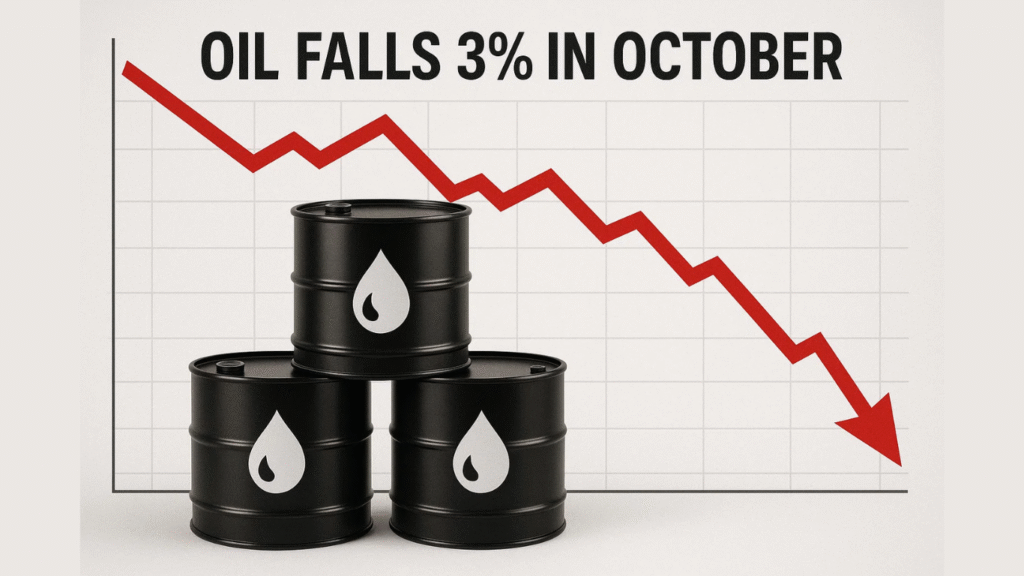Oil prices fell on Thursday as traders assessed both the Federal Reserve’s rate decision and a closely watched meeting between U.S. President Donald Trump and China’s Xi Jinping. At 08:25 ET (12:25 GMT), Brent crude futures slipped 0.7% to $63.86 a barrel, while West Texas Intermediate (WTI) fell 0.7% to $60.06.
Both benchmarks are heading for over 3% losses in October, marking their third consecutive monthly decline amid ongoing concerns about oversupply and slowing demand growth.
The meeting between Trump and Xi, held in South Korea during the APEC summit, temporarily lifted hopes of easing trade tensions. Trump said both sides had reached an “amazing” one-year agreement to reduce tariffs to 47% from 57% in exchange for renewed U.S. soybean purchases and a crackdown on illicit fentanyl trade.
However, markets remained cautious. Analysts viewed the deal as a temporary de-escalation, not a structural shift in relations. PVM’s Tamas Varga noted that the “lack of concrete details” left investors wary about the durability of any trade breakthrough.
Stronger Dollar Adds Pressure on Oil
The U.S. dollar surged nearly 0.6% overnight after the Federal Reserve cut interest rates by 25 basis points to 4.00%, as expected. However, Fed Chair Jerome Powell’s remarks suggested that further rate cuts this year were unlikely, citing uncertainty from the prolonged government shutdown.
While lower rates typically support oil by stimulating economic activity, the hawkish tone strengthened the dollar, weighing on commodity prices. A stronger greenback generally makes oil—priced in dollars—more expensive for buyers using other currencies.
Despite brief profit-taking that pulled the dollar down 0.2% in Asian trade, sentiment around oil remained cautious heading into the weekend.
Key factors weighing on oil markets:
- Fed’s limited rate-cut outlook boosts dollar strength
- Ongoing trade uncertainty clouds global demand
- Rising U.S. crude inventories add to oversupply fears

OPEC+ to Discuss Output Hike
Attention now turns to the OPEC+ meeting scheduled for this weekend. The group—led by Saudi Arabia and Russia—is expected to increase output by about 137,000 barrels per day in December, continuing a gradual production build-up despite weak market fundamentals.
The alliance has been raising supply to regain global market share, even as prices remain under pressure. Analysts warn that another production hike could deepen the glut unless demand recovers meaningfully in early 2026.
With both monetary and trade uncertainties clouding the outlook, investors will be watching whether OPEC+ signals any flexibility on output in response to softening prices.


